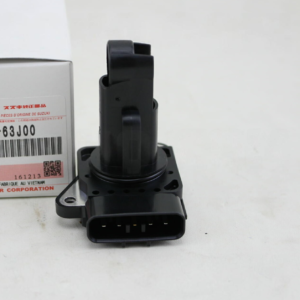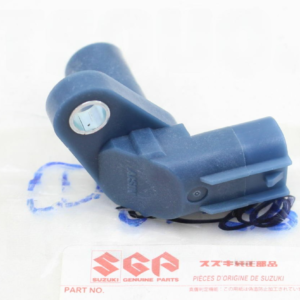**Navigating Precision: The Throttle Position Sensor in Automotive Engineering**
In the symphony of automotive engineering, where power meets precision, one essential component silently dictates the flow of energy—the throttle position sensor. While engines surge with energy, it’s the throttle position sensor that meticulously regulates the throttle opening, ensuring seamless acceleration and optimal engine performance. Join us as we delve into the significance, functionality, and importance of throttle position sensors in the realm of automotive technology.
**Understanding the Essence: What is a Throttle Position Sensor?**
A throttle position sensor (TPS) is an electronic device that monitors the position of the throttle valve in an internal combustion engine. Its primary function is to provide real-time feedback to the engine control unit (ECU) about the position and movement of the throttle, allowing for precise control over engine power and fuel delivery.
**The Evolution of Throttle Control Systems**
In the early days of automotive engineering, throttle control was primarily mechanical, relying on throttle cables or rods to actuate the throttle valve. However, as engines became more complex and performance demands increased, electronic throttle control systems emerged as a transformative technology. Throttle position sensors became integral to these systems, enabling precise control over engine power and response.
**The Significance of Precision Control**
In the dynamic realm of modern driving, where performance and efficiency are paramount, precise throttle control is crucial for optimizing engine performance and fuel economy. Throttle position sensors play a pivotal role in this regard, providing accurate feedback to the ECU, which adjusts fuel injection, ignition timing, and other parameters accordingly.
**The Silent Observer: How Does a Throttle Position Sensor Work?**
Despite its unassuming appearance, the throttle position sensor employs sophisticated technology to fulfill its role effectively. Most throttle position sensors use a potentiometer or Hall effect sensor to detect the position of the throttle valve. As the throttle valve opens or closes, the sensor generates a voltage signal that is proportional to the throttle position.
This voltage signal is sent to the ECU, which uses it to determine the desired engine power output and fuel delivery. Based on this information, the ECU adjusts various engine parameters to maintain optimal performance and efficiency.
**The Unseen Benefits: Advantages of Throttle Position Sensors**
While throttle position sensors may operate quietly behind the scenes, their impact on engine performance and responsiveness is undeniable. Here are some key advantages:
1. **Enhanced Engine Response:** Throttle position sensors provide real-time feedback to the ECU, enabling instantaneous adjustments to throttle position and engine power output.
2. **Improved Fuel Efficiency:** Precise throttle control facilitated by throttle position sensors helps optimize fuel delivery, reducing fuel consumption and emissions.
3. **Enhanced Driveability:** Accurate throttle control results in smoother acceleration and more predictable engine response, enhancing overall driving experience.
4. **Advanced Diagnostics:** Throttle position sensors provide valuable diagnostic information to technicians, aiding in the diagnosis and repair of engine issues.
**Looking Ahead: The Future of Throttle Control**
As automotive technology continues to advance, so too will the field of throttle control systems. Innovations in throttle position sensor design, materials, and integration with other engine systems may lead to even more precise and efficient throttle control in the future. Furthermore, as vehicles transition towards electrification and autonomous driving, throttle position sensors will continue to play a crucial role in optimizing engine performance and responsiveness.
**In Conclusion: The Precision Navigator of Engine Power**
In the dynamic world of automotive engineering, where every acceleration is finely tuned, throttle position sensors emerge as silent but indispensable navigators of engine power. Their unassuming presence belies their critical importance in ensuring precise throttle control, engine response, and overall performance. So, the next time you feel the seamless power and responsiveness of your vehicle, remember to thank the unsung hero working diligently behind the scenes—the throttle position sensor.
In stock (can be backordered)
$18,926.31
**Navigating Precision: The Throttle Position Sensor in Automotive Engineering**
In the symphony of automotive engineering, where power meets precision, one essential component silently dictates the flow of energy—the throttle position sensor. While engines surge with energy, it’s the throttle position sensor that meticulously regulates the throttle opening, ensuring seamless acceleration and optimal engine performance. Join us as we delve into the significance, functionality, and importance of throttle position sensors in the realm of automotive technology.
**Understanding the Essence: What is a Throttle Position Sensor?**
A throttle position sensor (TPS) is an electronic device that monitors the position of the throttle valve in an internal combustion engine. Its primary function is to provide real-time feedback to the engine control unit (ECU) about the position and movement of the throttle, allowing for precise control over engine power and fuel delivery.
**The Evolution of Throttle Control Systems**
In the early days of automotive engineering, throttle control was primarily mechanical, relying on throttle cables or rods to actuate the throttle valve. However, as engines became more complex and performance demands increased, electronic throttle control systems emerged as a transformative technology. Throttle position sensors became integral to these systems, enabling precise control over engine power and response.
**The Significance of Precision Control**
In the dynamic realm of modern driving, where performance and efficiency are paramount, precise throttle control is crucial for optimizing engine performance and fuel economy. Throttle position sensors play a pivotal role in this regard, providing accurate feedback to the ECU, which adjusts fuel injection, ignition timing, and other parameters accordingly.
**The Silent Observer: How Does a Throttle Position Sensor Work?**
Despite its unassuming appearance, the throttle position sensor employs sophisticated technology to fulfill its role effectively. Most throttle position sensors use a potentiometer or Hall effect sensor to detect the position of the throttle valve. As the throttle valve opens or closes, the sensor generates a voltage signal that is proportional to the throttle position.
This voltage signal is sent to the ECU, which uses it to determine the desired engine power output and fuel delivery. Based on this information, the ECU adjusts various engine parameters to maintain optimal performance and efficiency.
**The Unseen Benefits: Advantages of Throttle Position Sensors**
While throttle position sensors may operate quietly behind the scenes, their impact on engine performance and responsiveness is undeniable. Here are some key advantages:
1. **Enhanced Engine Response:** Throttle position sensors provide real-time feedback to the ECU, enabling instantaneous adjustments to throttle position and engine power output.
2. **Improved Fuel Efficiency:** Precise throttle control facilitated by throttle position sensors helps optimize fuel delivery, reducing fuel consumption and emissions.
3. **Enhanced Driveability:** Accurate throttle control results in smoother acceleration and more predictable engine response, enhancing overall driving experience.
4. **Advanced Diagnostics:** Throttle position sensors provide valuable diagnostic information to technicians, aiding in the diagnosis and repair of engine issues.
**Looking Ahead: The Future of Throttle Control**
As automotive technology continues to advance, so too will the field of throttle control systems. Innovations in throttle position sensor design, materials, and integration with other engine systems may lead to even more precise and efficient throttle control in the future. Furthermore, as vehicles transition towards electrification and autonomous driving, throttle position sensors will continue to play a crucial role in optimizing engine performance and responsiveness.
**In Conclusion: The Precision Navigator of Engine Power**
In the dynamic world of automotive engineering, where every acceleration is finely tuned, throttle position sensors emerge as silent but indispensable navigators of engine power. Their unassuming presence belies their critical importance in ensuring precise throttle control, engine response, and overall performance. So, the next time you feel the seamless power and responsiveness of your vehicle, remember to thank the unsung hero working diligently behind the scenes—the throttle position sensor.
| Weight | 0.04 kg |
|---|---|
| Warehouse | Inventory at warehouse 2 |



Get E-mail updates about our latest products and special offers.
Sensors and More is Jamaica’s ultimate online auto parts store. Established in 2020, we specialize in genuine electrical parts for Japanese, Read more…
Reviews
There are no reviews yet.